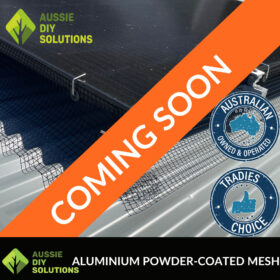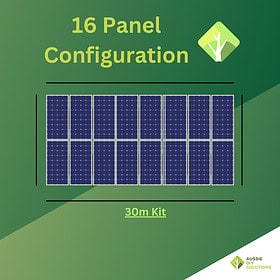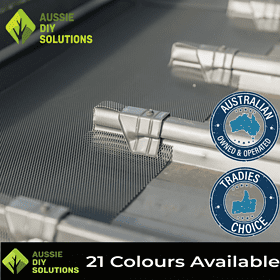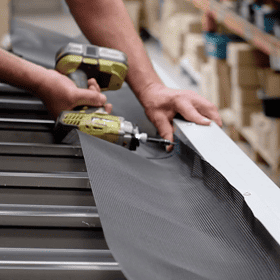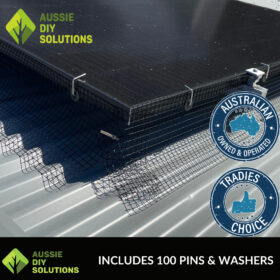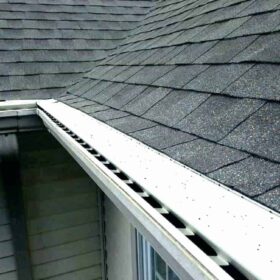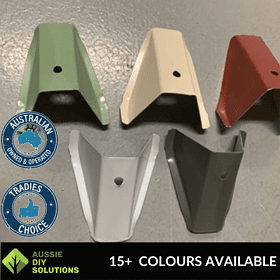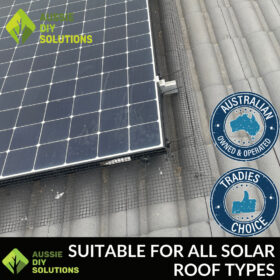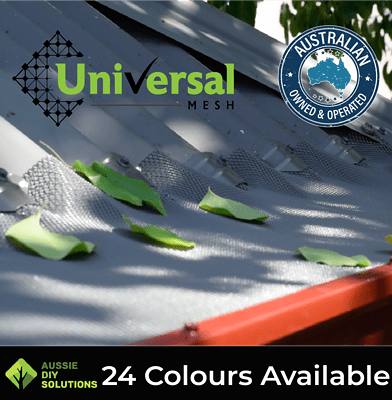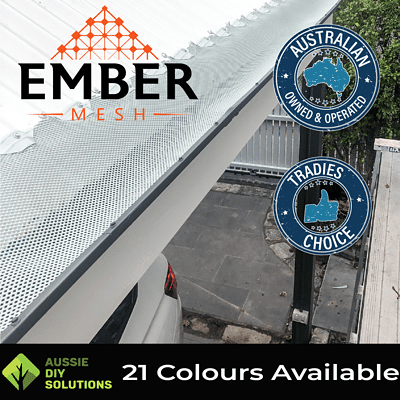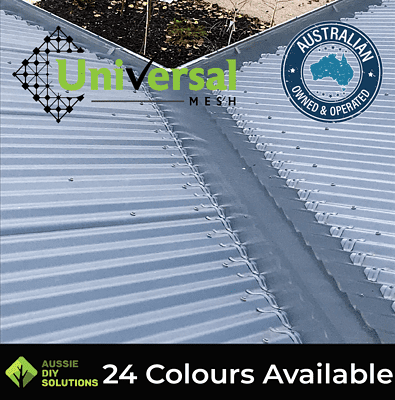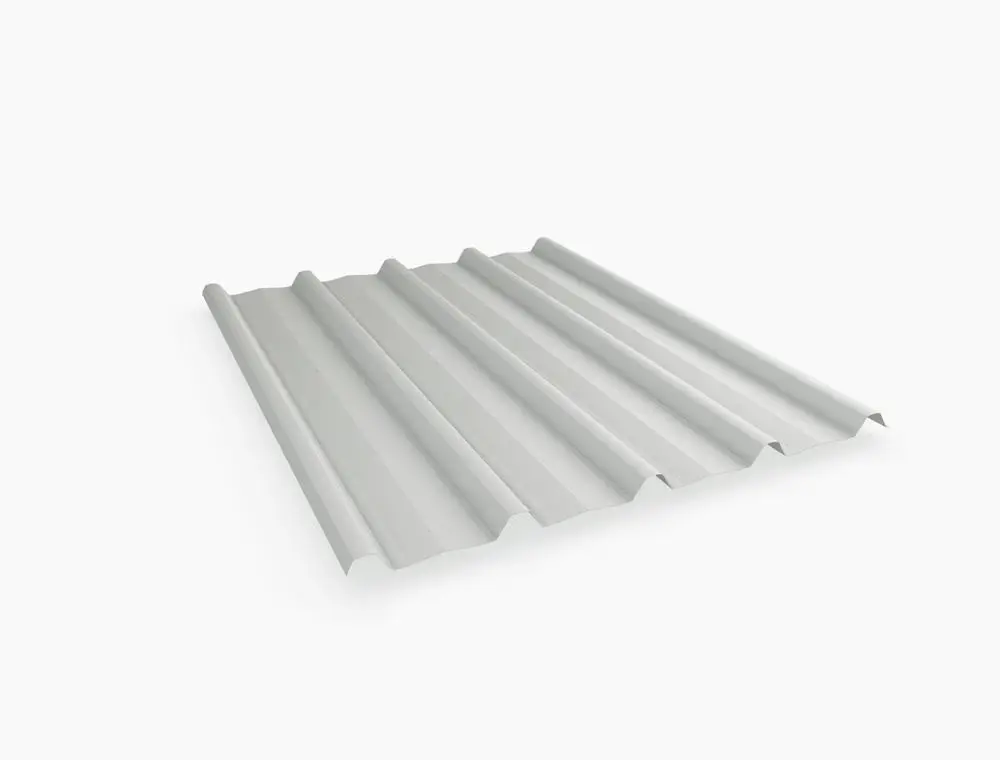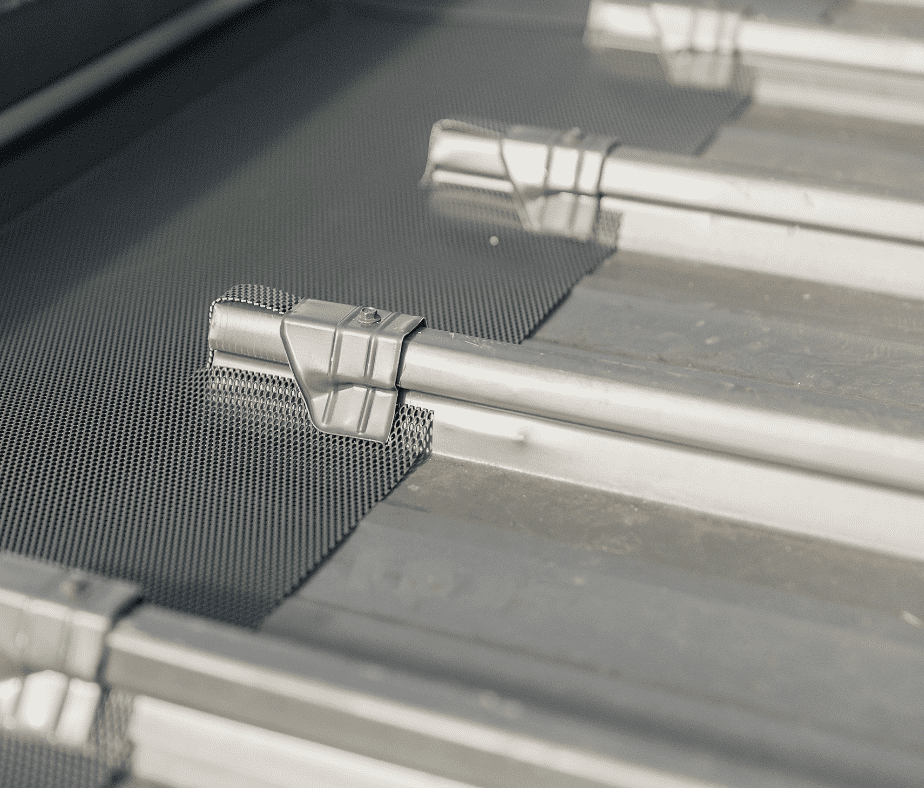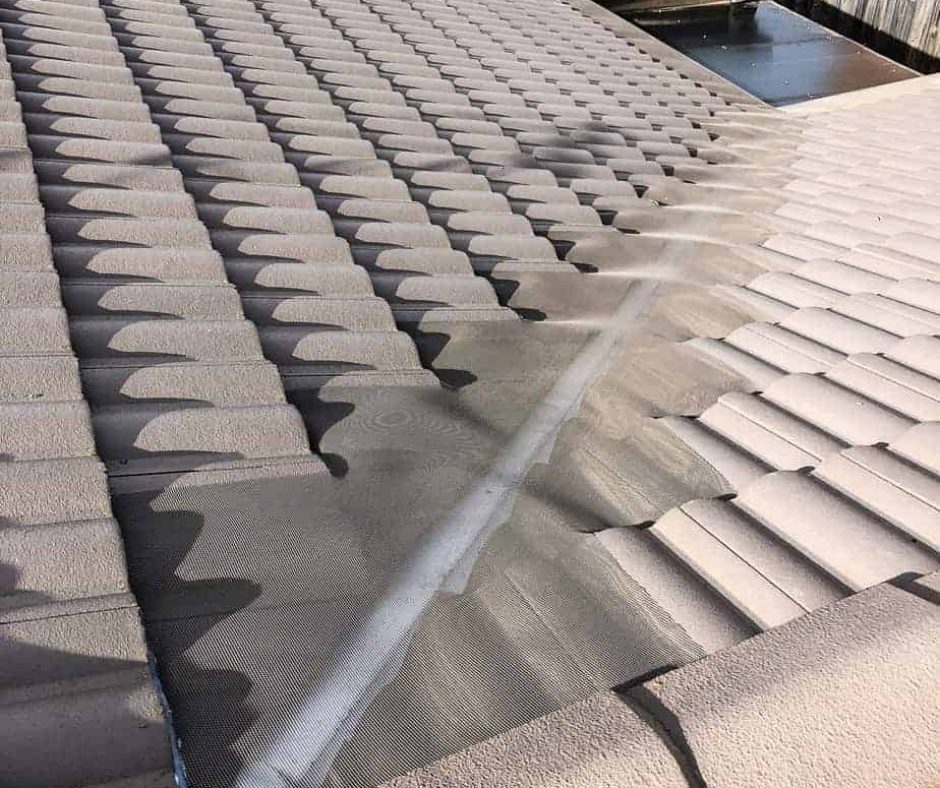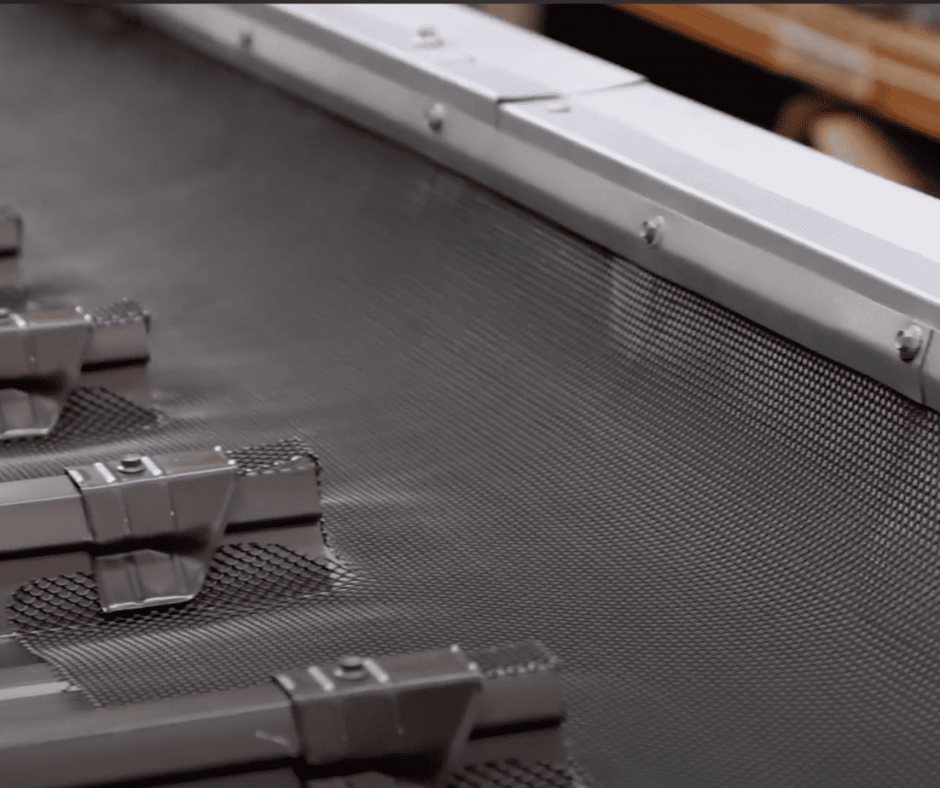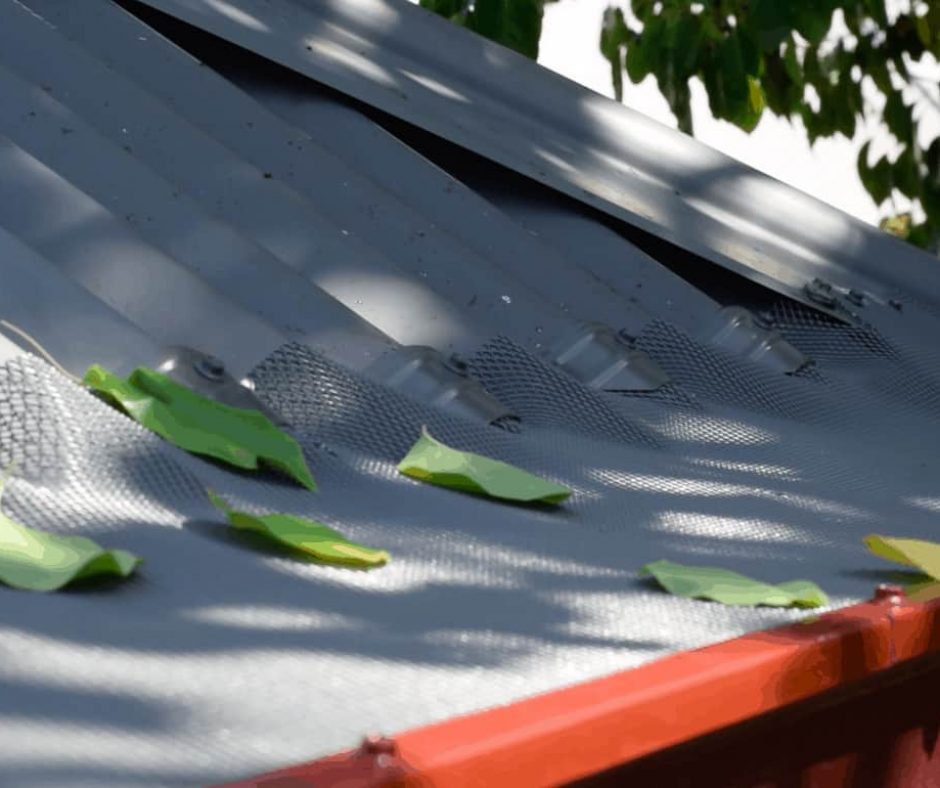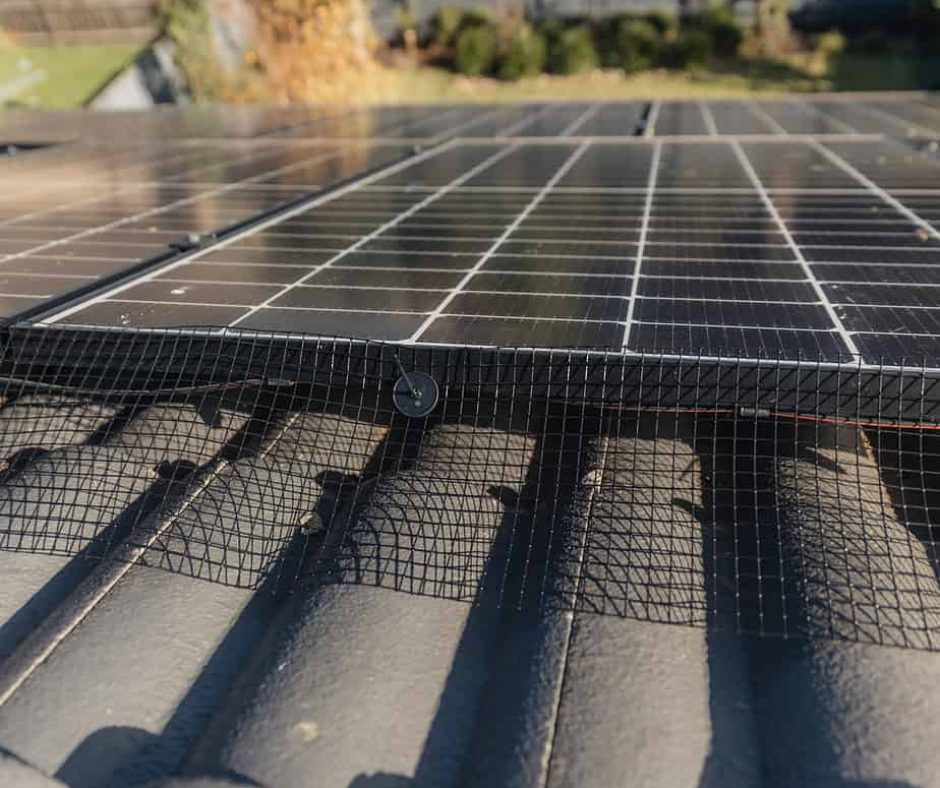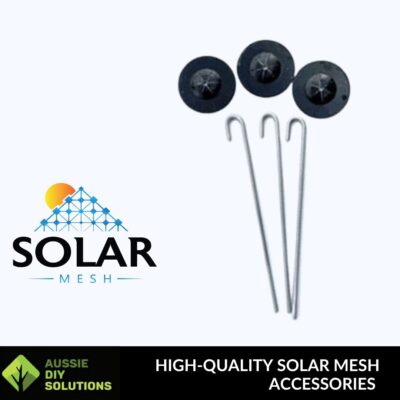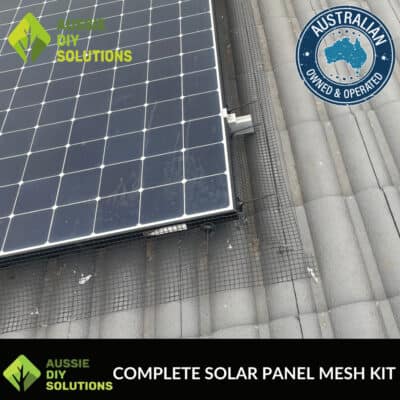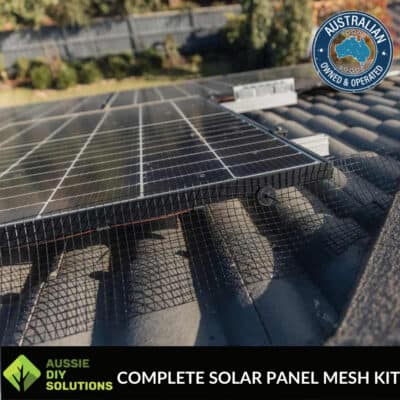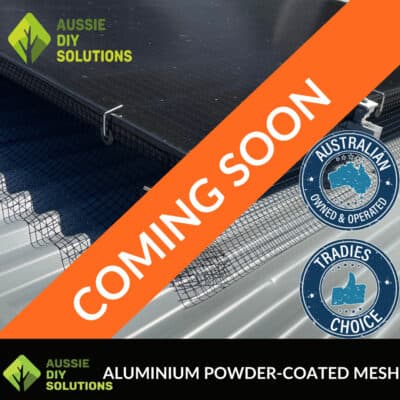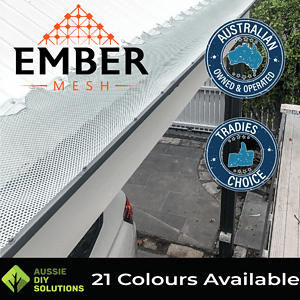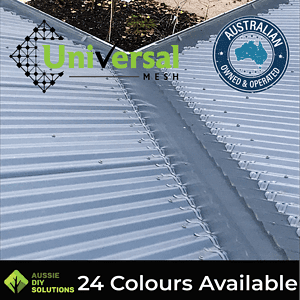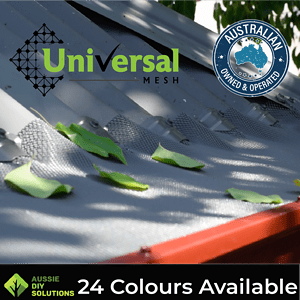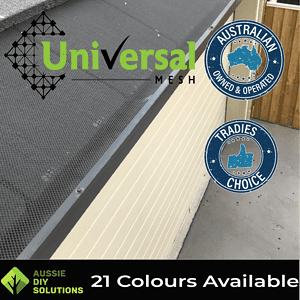DIY Gutter Guard Installation
Each DIY gutter guard kit comes with easy-to-follow gutter guard installation and videos for each metal roof and tile roof type.
Corrugated Gutter Guard Installation
- Roll out your mesh roll along the gutter line.
- Cut away excess mesh.
- Secure the gutter mesh with trims.
- Secure mesh to roof with corrugated clips
- Install around the ridge caps (if applicable)
- Install to tile roof valley (if applicable)
- Roll out your mesh roll along the gutter line.
- Cut away excess mesh.
- Secure the gutter mesh with trims.
- Tuck the mesh under the second row of tiles.
- Install around the ridge caps (if applicable)
- Install to tile roof valley (if applicable)
Corrugated Gutter Guard Valley
- Measure valley width and cut mesh size. Ensure the mesh covers the valley and is wide enough to be tucked under tiles.
- Lay the mesh from valley top to bottom and tack if necessary.
- Cut the mesh to fit around the tiles vertically & horizontally
- Tuck the mesh under the tiles
- Cut the mesh around the ridge cap
- Silicone to seal mesh
Tiled Gutter Guard Installation
- Measure valley width and cut mesh size. Ensure the mesh covers the valley and is wide enough to be secured with saddles.
- Lay the mesh from valley top to bottom and tack if necessary.
- Place a saddle on each corrugation, starting from the top and working your way down. Repeat on another side.
Tip: Place saddles in reverse fit to follow roof contours.
- Clean the Box Gutter
- Define the Perfect Trim Line
- Pin the Mesh to the Box Gutter
- Fit the Trims
- Cut the Mesh Down Along the Ribs
- Secure the Mesh to the Ribs with Clips
Solar Panel Mesh Instructions
- Cut mesh to solar mesh size
- Installing the mesh to panels
- Fix the mesh to the solar panels with clips and washers
- Bend the mesh to outside corners & inside corners
OUR BEST SELLERS
-
Corrugated
30m Ember Mesh Corrugated Ember Guard Kit
$369.00 Select options This product has multiple variants. The options may be chosen on the product pageRated 0 out of 5 -
Bird Proofing
5m Universal Mesh Corrugated Gutter Guard Valley Kit
$89.00 Select options This product has multiple variants. The options may be chosen on the product pageRated 0 out of 5 -
Bird Proofing
10m Universal Mesh Corrugated Gutter Guard Kit
$115.00 Select options This product has multiple variants. The options may be chosen on the product pageRated 5.00 out of 5 -
Bird Proofing
50m Universal Mesh Tiled Gutter Guard Kit
$489.00 Select options This product has multiple variants. The options may be chosen on the product pageRated 5.00 out of 5
Our Customers Love Our Products

DIY GUTTER GUARDS

- Aluminium gutter mesh roll
- Ember guard installation option
- Colorbond® Saddles & Trims
- Roof screws

- Aluminium gutter mesh roll
- Ember guard installation option
- Colorbond® Trims
- Roof screws
- Aluminium gutter mesh roll
- Ember guard installation option
- Colorbond® Saddles & Trims
- Roof screws
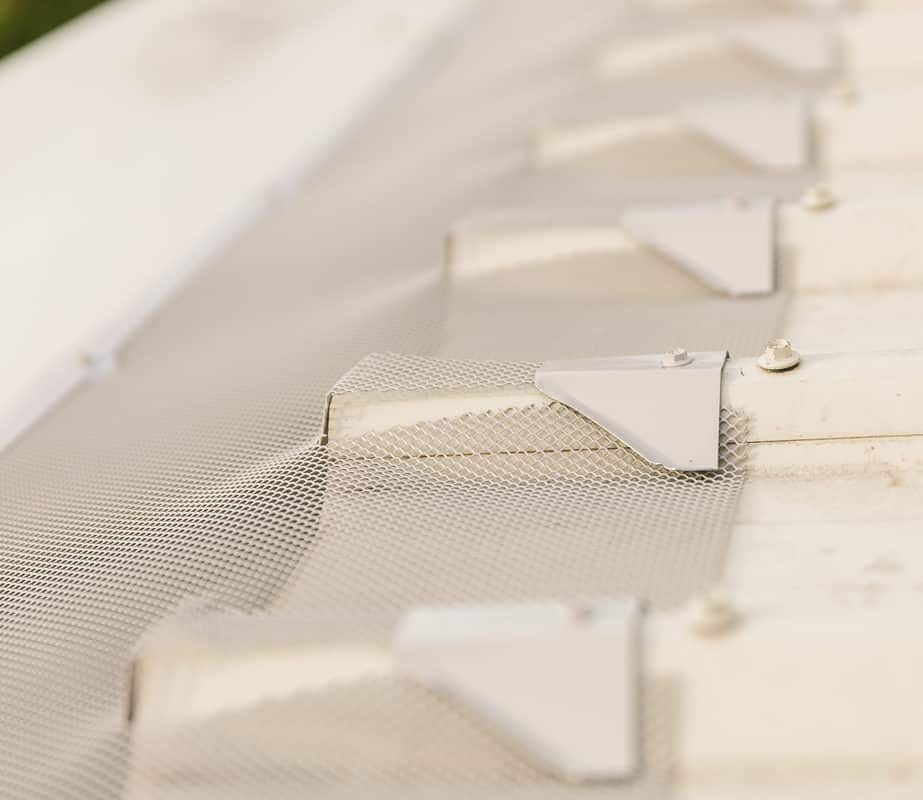
- Aluminium gutter mesh roll
- Ember guard installation option
- Colorbond® Saddles & Trims
- Roof screws
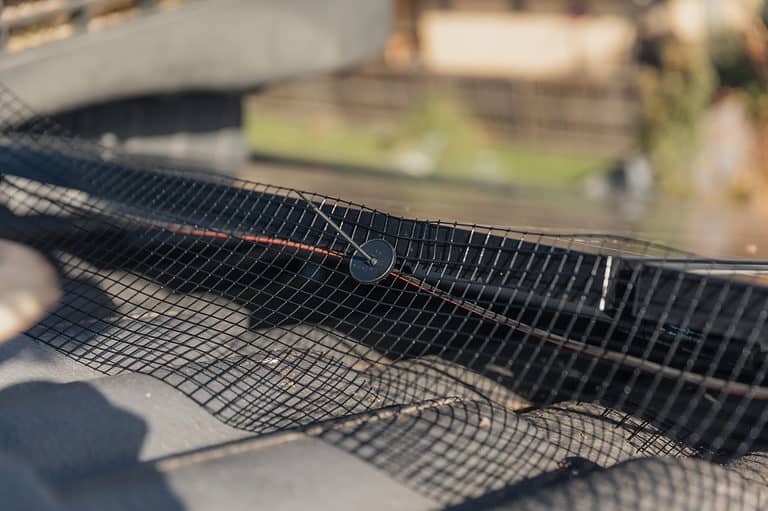
- Stainless steel mesh roll
- Clips for DIY installation
- Tiled roof installation process
- Metal roof installation process
Gutter Guards
What are the safety considerations for the gutter guard installation process?
Working at heights and slippery, uneven surfaces is HAZARDOUS. Every effort should be made to reduce the risk of injury and property damage (Contact your local Work Cover Authority or local council for site-specific safety regulations).
Some safety considerations include:
- Use a safety harness anchored correctly (have a contingency with an extra person to assist with any potential falls)
- Wear protective clothing such as non-slip shoes, sun protection (i.e. hats, gloves, sunscreen), and gloves
- Handle the product with care (wear gloves); it does have sharp edges
- Do not work in the rain or on wet surfaces
- Use a quality ladder and scaffolds on stable, even ground
- Ensure no overhead power lines in your vicinity
- Ensure you use well-maintained tools
- Keep children and pets away from the work area
Is there maintenance after you install gutter guards?
In most cases, the combination of the roof shape and gutter guard slope will encourage leaves and debris to fall to the ground in wind and rain. When trees with heavy or finer debris overhang the gutter guard, homeowners may need to gently sweep or blow the debris off the roof. If your gutters have a correct fall, dirt and small particles will flush out with water flow; if this is not the case, you may need to wash the gutters.
Please note gutter mesh is slippery on any roof type, do not walk on the mesh to reduce the chance of damage and a fall.
Does installation differ for each gutter guard solution?
Various gutter guard solutions include gutter protection, bird proofing, bushfire protection and rainwater harvesting system. The installation steps are the same for each gutter guard solution. The installation differs between the tiled roof and metal roof types.
Does gutter guard installation differ for each roof type?
The metal roof gutter guard systems, Trimdek®, Klip-Lok®, and corrugated roofs, have identical installation steps, as the DIY gutter protection kits contain similar parts and materials. The critical difference between the kits is the saddles are designed to fit the roof shape.
Kits for tiled roofs do not have saddles; instead, the gutter guard mesh is tucked under the second row of tiles.
What are your DIY gutter guard systems?
Our DIY gutter guard kits provide a complete gutter protection system – standard and box gutter guard installation – and roof valleys for residential and commercial properties. Get gutter guard protection for every gutter guard solution, including gutter protection from clogged gutters and blocked gutters, bird proofing, bushfire protection and rainwater harvesting filter.

